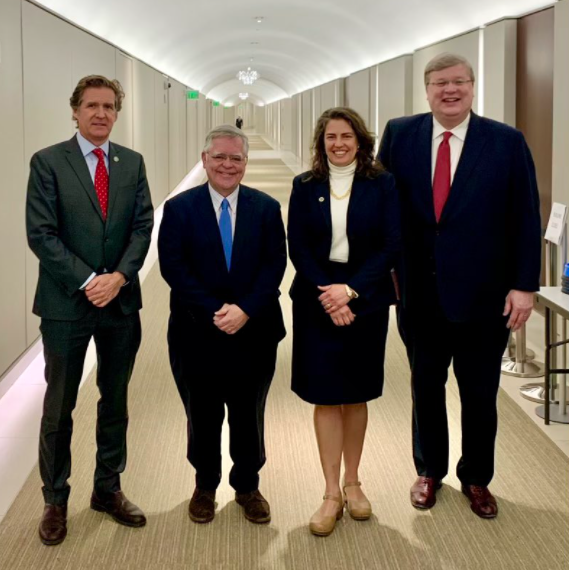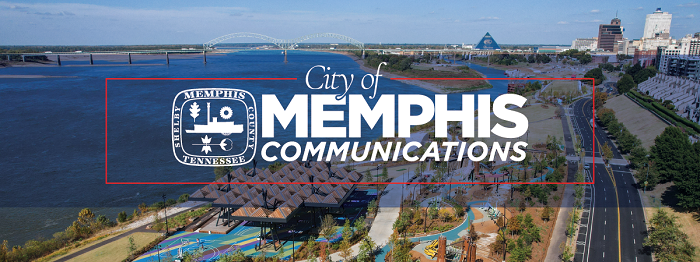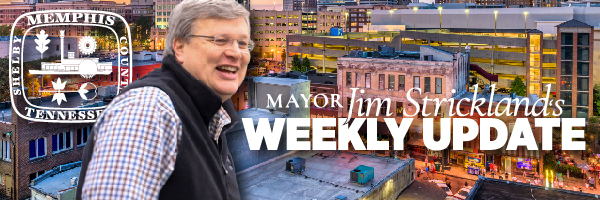Weekly Update
Memphis sent this bulletin at 02/11/2022 03:25 PM CSTFriends,
I know the last week has been difficult for many in our community who have been without power. You have either had to brave it out in the cold, lucky and financially able to find and pay for a hotel room, or fortunate enough to stay with friends or family nearby.
I know it’s frustrating, unnerving, and can make you feel helpless and out of control. I’m sorry for that. I want you to know that MLGW crews are working around the clock to get power restored, and city crews are continuing to remove debris from streets and rights of way across our city.
Over the last 20 years, we have had a handful of these detrimental types of storms. But each time they happen, they are painful reminder of a critical piece of the power supply puzzle—infrastructure.
Below is a chart listing all the major storm-related outages we’ve experienced since 2003, the number of customers, and the duration without power.

**We have requested the ice storm of 1994 information and will update you in a future email.
Earlier this week on a local news program, I talked about the need and importance of keeping our power supply infrastructure up-to-date. One of the potential solutions that has been discussed in the past, and I mentioned again on the program, was placing our powerlines underground. To do this could cost between roughly six and eight billion dollars—not a small sum.
It could be funded a couple different ways—raise rates or fund it through the sale of our utility company with all proceeds going to fund the cost of construction.
I want to be perfectly clear—I’m not advocating for this yet, but it’s something we as a community must thoroughly review. These storms happen too frequently, and we need to explore options to reduce their impact.
A matter of fairness: Recently, I wrote about a potential legislative solution to the state’s elimination of the Hall Income Tax, which reduced the revenues to the City of Memphis by $15 million a year.
I want to dig a little deeper into two particular bills and how they will increase city revenues without increasing your taxes. (This may be a little wonky for some, but the important takeaway is that both bills mean more of your money coming back to Memphis).
Senate Bill 2469 / House Bill 2562—In 2002, during difficult budget times, the state doubled the amount of the purchase price of an individual sale item that is subject to the combined state and local option sales tax (9.75%) from $1,600 to $3,200. In addition, the state altered the distribution of the associated sales tax collections.
Under the altered arrangement, the state receives its full 7% levy and local government continues to receive its local levy on the first $1,600 of the purchase price of an item. However, the state retains 100 percent of its 7% levy as well as 100 percent of the levy that is customarily reserved for local government (2.75%) on the sale of items with a purchase price above $1,600.
This bill would allow a city to receive its share of the taxes on the full $3,200. For Memphis, this equates to roughly $3.6 million a year.
Senate Bill 2076 / House Bill 2012--Cities are the economic engine of the state. Economic growth is intentional and when it occurs, it is financed largely through city tax dollars. City taxpayers across our state finance the costs of infrastructure, services and amenities responsible for much of the state’s economic output through their city taxes. As a result, any measurable economic growth is accompanied by an increased local tax burden borne by city residents.
The State recognized this fact in 1947, when the it began sharing 4.6% of each year’s total state sales tax collections with cities. This was done for the purposes of recognizing the collective contribution of cities as the state’s economic engine and acknowledging that city residents incur a local tax burden that is directly attributable to financing, developing and maintaining an economic environment that continues to generate a healthy portion of the sales tax revenues accruing to the state.
Today, 92% of the state’s total sales tax collections are generated within city limits.
Twenty years ago, the state was confronted with serious fiscal challenges, and it increased the sales tax rate from 6% to 7%. The revenues associated with this 1% increase in the state sales tax rate accrue entirely to the state’s general fund, precluding cities from sharing in this increase.
As a result of this change to the sharing relationship, municipalities only receive a share of the state sales tax generated by 5.5% of the state sales tax rate rather than the full 7%.
This bill would restore the sharing relationship and allow cities to share in 100% of the state sales tax revenues flowing to the state’s general fund. For Memphis, this equates to a little over $8.8 million a year.
These bills combined would net city government over $12 million per year.
As I have said many times, one of our primary objectives to reduce crime is to recruit and retain more officers and ultimately reach a staffing level of 2,500 for the department. The reallocation of these sales taxes would give us the chance to do that.
If you want to help us get these important bills passed, please reach out to your state representatives and state senators. Hearing from you further illustrates their importance and what this recurring revenue will mean for our city.
Find and contact your legislators here.

Earlier this week, I was at the capitol and legislative plaza with the mayors from Chattanooga, Knoxville and Nashville telling our story and sharing the significance of this legislation.
With your help, we can get them passed and make a lasting impact, not only in Memphis, but for communities all across our state.
Enjoy your weekend!
Yours,



